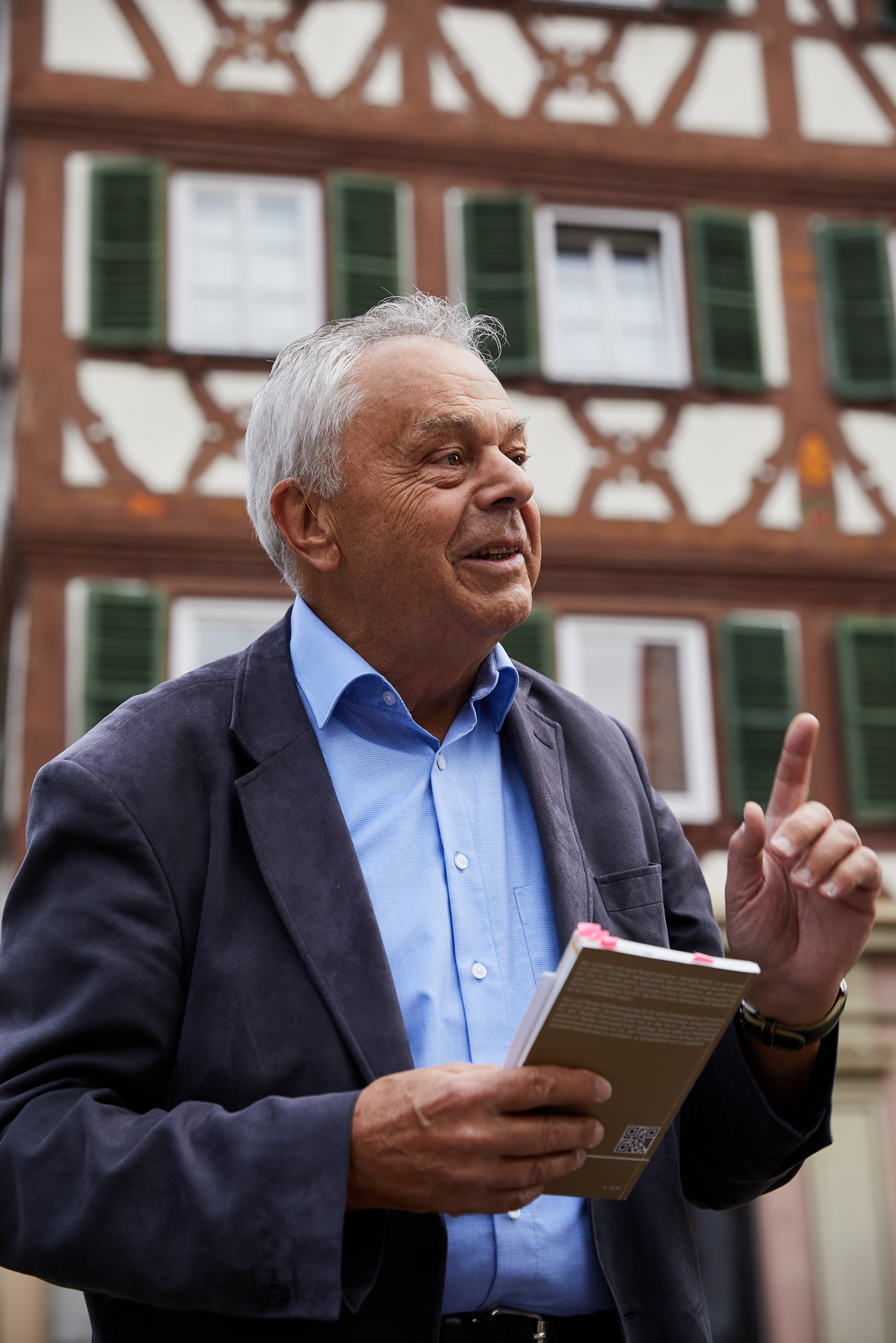They do still exist: places that merge the past and the present into a harmonious whole. At once dreamy and romantic, but also vibrant and modern: Mosbach’s historical centre, with its uniquely beautiful ensemble of traditional half-timbered architecture, is an outdoor museum and an urban laboratory, all at the same time. It is also a home to people that love their city and tell their story with real passion.
The last tower watchman of Mosbach had an enviable job. The view from the town hall tower, across the Odenwald, is breathtaking – and his work-life balance was close to perfection: from his spot, at a height of 34 meters, Georg Andreas Großkinsky was merely in charge of ensuring the tower bells were ringing reliably. At the same time he was able to make some money on the side as a cobbler. Up until 1909 the inhabitants of Mosbach were able to drop shoes in need of repair, into a basket, lowered from the church’s spire. Shortly thereafter a repaired shoe would find its way down — and after payment the second shoe would follow.
This is just one of many curious stories, that one can learn about, during a tour up to the town hall tower, presumed one is capable of ignoring the awesome view. The view downwards onto the tiled roofs of the historical city centre, is almost eerily beautiful, and makes a stroll through the narrow winding streets feel absolutely essential.
“We offer tours through the city centre on Wednesdays and Saturdays, and the number of visitors has been increasing steadily.” Says Mariola Hoinka, who manages the tourist information office at the marketplace. The office is a contact point for city tourists, traditional architecture enthusiasts and touring cyclists, and it could not be situated at a better location – surrounded by landmarks, such as the abbey church St. Juliana, or the Palmsches Haus, which is one of Germanys most beautiful half-timbered houses. Originally from Bremen, Mariola wasn’t planning on spending long in Mosbach – just a while – to gain some experience after majoring in tourism. In the end two years grew into almost ten, and an initially cautious approach to the way of life in a small city of 23,000 people, became an avowed belief: “I grew to love life here in Mosbach – not only because of how beautiful the country is, but also as getting to know the people is so much fun.”
One of these people is journalist and archaeologist Rudolf Landauer, who mostly specializes in his favorite two subjects: the Roman era and aerial archaeology. Following an enquiry by Mariola Hoinka, this Mosbacher-of-choice began looking for literature on traditional half-timbered architecture in Mosbach – and he found: nothing! “I was very surprised to discover, that five centuries of exceptional half-timbered architecture was not yet documented. We immediately knew it was time for a guide to this part of the cities cultural heritage.”
A year of work, and many surprises, finally led to the 2016 release of the „Fachwerkführer Mosbach“ (Guide to the half-timbered architecture of Mosbach). The guide created a little revolution of sorts, as it has totally revived the world of half-timbered architecture in Mosbach. Each of the 25 honorary guides can tell a unique story about every half-timbered house, but of course individualists are free to go on their own explorations of the old town and to be amazed. It seems crazy that the houses here braved the chaos of the 30-year war, the Palatinate War of Succession and two world wars. This way a unique architectural ensemble was preserved, sealed off by the lush green Odenwald mountains. “What is special here is the fact that the buildings range from the 14th to the 19th century and are in great shape. Most are inhabited or used commercially.”














